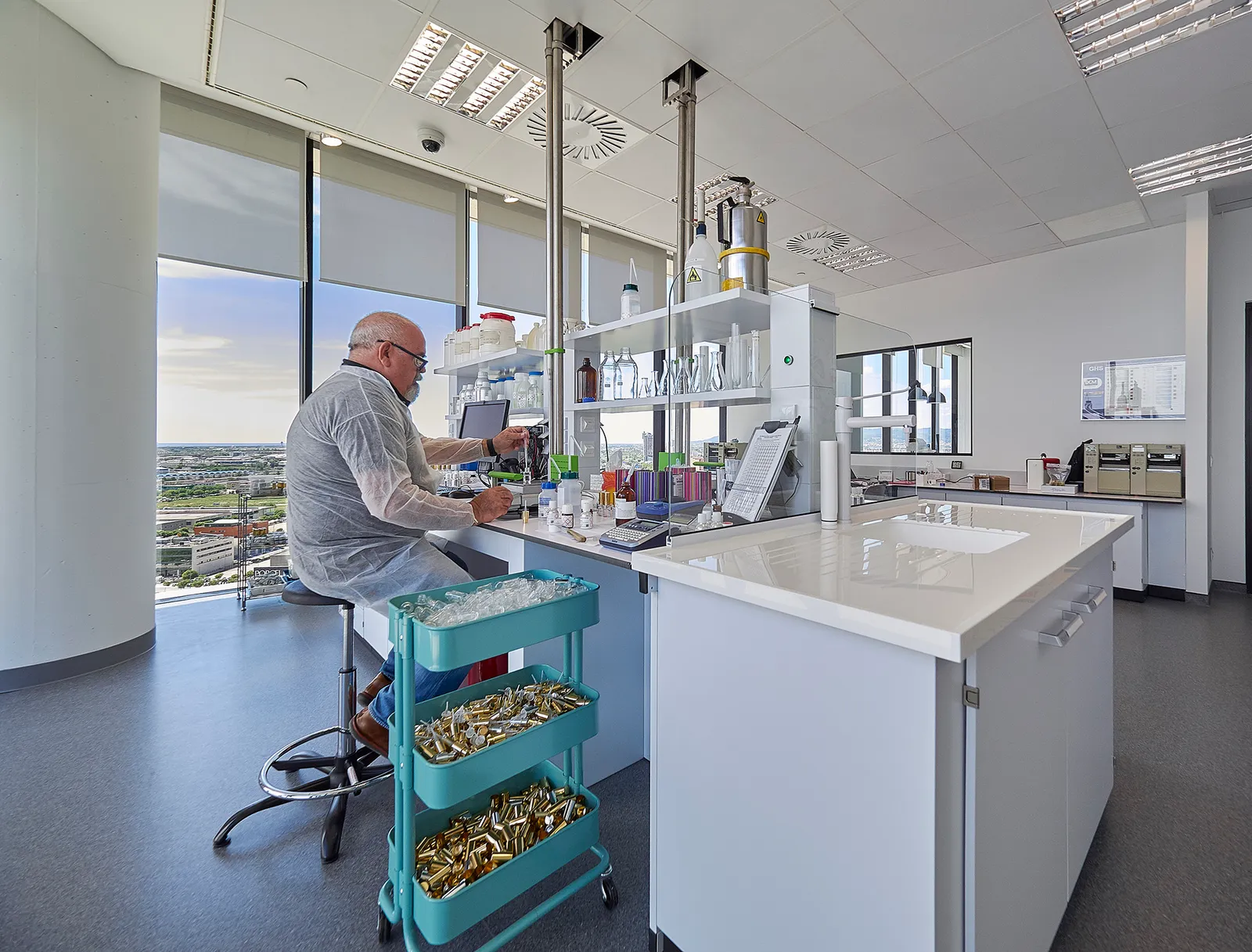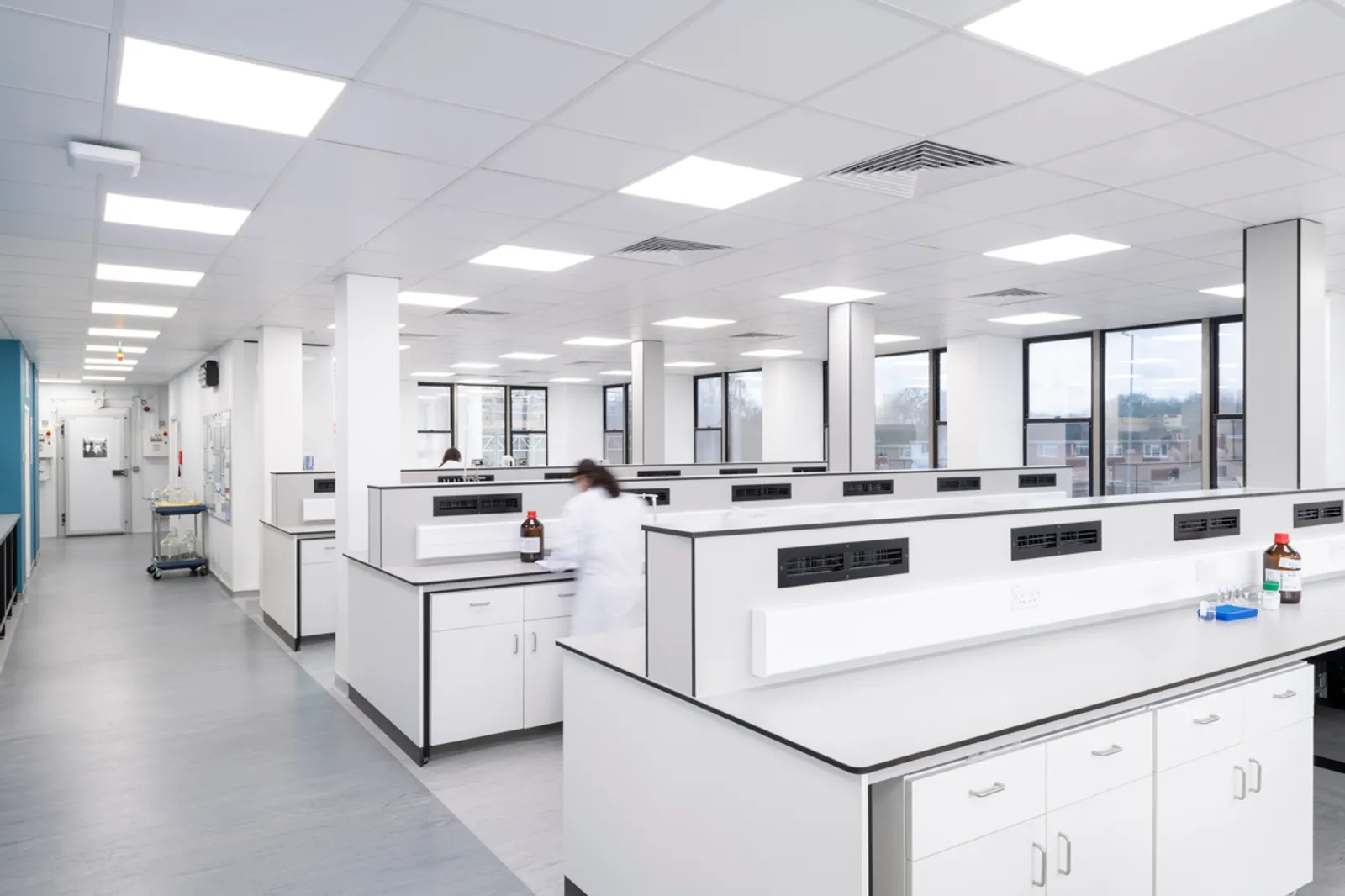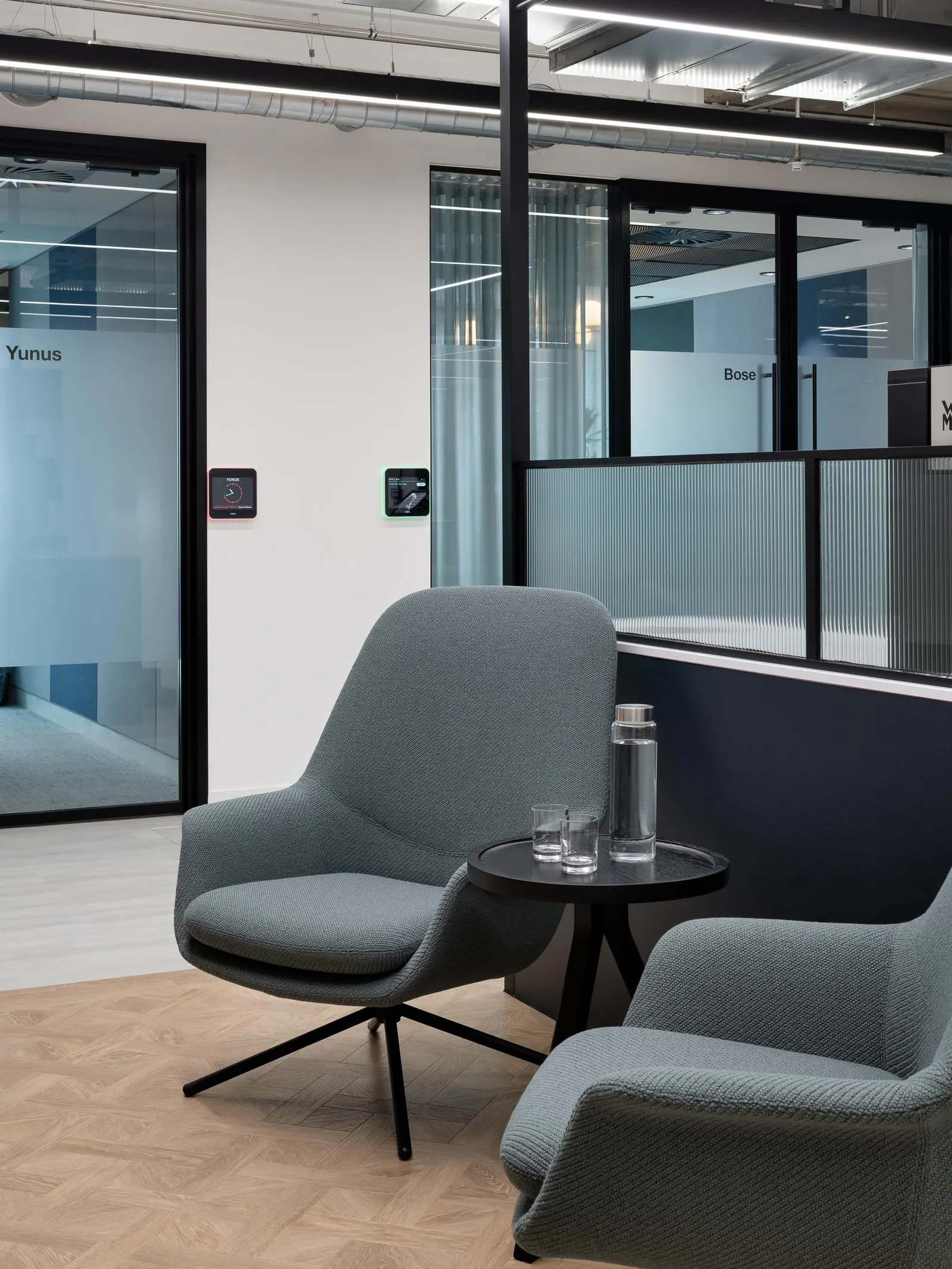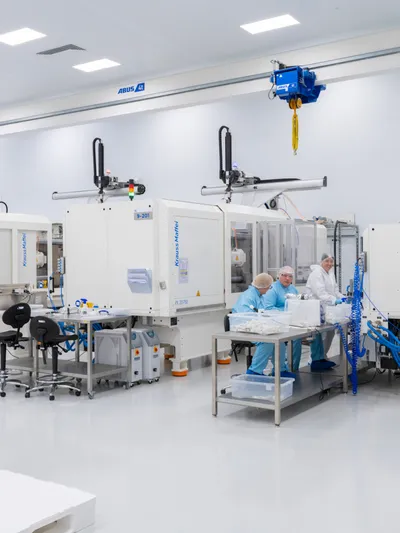What is the difference between a dry lab and a wet lab, and how do their differences factor into the design of a laboratory?
The main difference between a dry lab vs a wet lab is how they are used in scientific research. A wet lab is designed for experiments that involve liquids, chemicals, and biological samples, requiring equipment such as sinks, fume hoods, and pipettes. In contrast, a dry lab focuses on computational or theoretical work, involving data analysis, simulations, and computer-based research without the need for wet materials.
What is a Wet Lab?
A wet lab is a research space where scientists perform experiments using liquid-based materials, chemicals, and biological substances. These labs require special infrastructure, including:
- Sinks and water sources for washing equipment and handling liquids
- Ventilation systems like fume hoods to manage hazardous fumes
- Refrigerators and freezers to store samples
- Sterile workstations for handling biological materials safely
Wet labs are common in fields such as chemistry, biology, and pharmaceutical research, where physical experimentation with substances is necessary to discover new compounds, test reactions, or develop medicines.

What is a Dry Lab?
A dry lab, on the other hand, is focused on research that does not require liquid substances. Instead, these labs support data-driven work, such as computational modelling, simulations, and data analysis. Typical equipment in dry labs includes:
- Computers and servers for data storage and processing
- Workstations for researchers to analyse data and run simulations
- Specialised software for modelling complex systems or conducting virtual experiments
Dry labs are often used in disciplines such as physics, engineering, and data science, where the focus is on theoretical research, modelling, and statistical analysis rather than hands-on experimentation.

Key Differences: Dry Lab vs Wet Lab
Aspect | Wet Lab | Dry Lab |
Purpose | Physical experimentation with substances | Computational or theoretical research |
Materials Used | Liquids, chemicals, biological samples | Data, computer simulations |
Infrastructure Needed | Sinks, fume hoods, sterile environments | Computers, servers, specialised software |
Fields of Use | Chemistry, biology, pharmaceuticals | Physics, engineering, data science |
Choosing the Right Lab for Your Needs
When considering the redesign or design of a new laboratory space, understanding the requirements of both wet and dry labs is crucial. A wet lab requires more physical infrastructure to handle substances and ensure safety, while a dry lab is more focused on technology and computational equipment. Some modern laboratories combine both types, offering a versatile space for varied research activities.
Wet Vs Dry Labs - The Facts
Deciding whether you require a wet lab or a dry lab will naturally depend on the type of scientific work you plan to undertake. However, there are some other factors that could also play a role in your decision making.
- Space Requirements - wet labs typically require significantly more space than dry labs due to the need for fume hoods, sinks, chemical storage, and specialised ventilation systems. This can have a big effect on laboratory design, planning, and budget.
- Rising Investment in Wet Lab Spaces - According to JLL’s Life Sciences Real Estate Outlook (2021), demand for wet lab space in the U.S. increased by 34% between 2019 and 2021, driven by the growth of pharmaceutical and biotech research sectors. This surge reflects the ongoing importance of hands-on experimental research, especially in the life sciences.
- Cost Differences - Wet labs are likely to cost more than dry labs by at least double. The cost to maintain wet labs is also higher due to the need for advanced infrastructure, plumbing, ventilation, and safety features in wet labs.
- Hybrid Lab Spaces - A study by McKinsey & Company suggests that the demand for hybrid lab spaces—combining dry and wet lab functions—has been rising. These integrated spaces are particularly valuable in interdisciplinary research environments such as pharmaceutical R&D, where both data analysis and hands-on experimentation are essential.
For more guidance on choosing the right laboratory design, download our free guide to designing laboratory and controlled environments.

Get in Touch with Area for Expert Laboratory Fit-Outs
If you're looking to design or upgrade your laboratory space, whether it’s a dry lab, wet lab, or a hybrid, Area specialises in creating bespoke laboratory environments that meet the unique needs of your research. Contact us today to discuss your pharmaceutical or laboratory fit-out needs.




